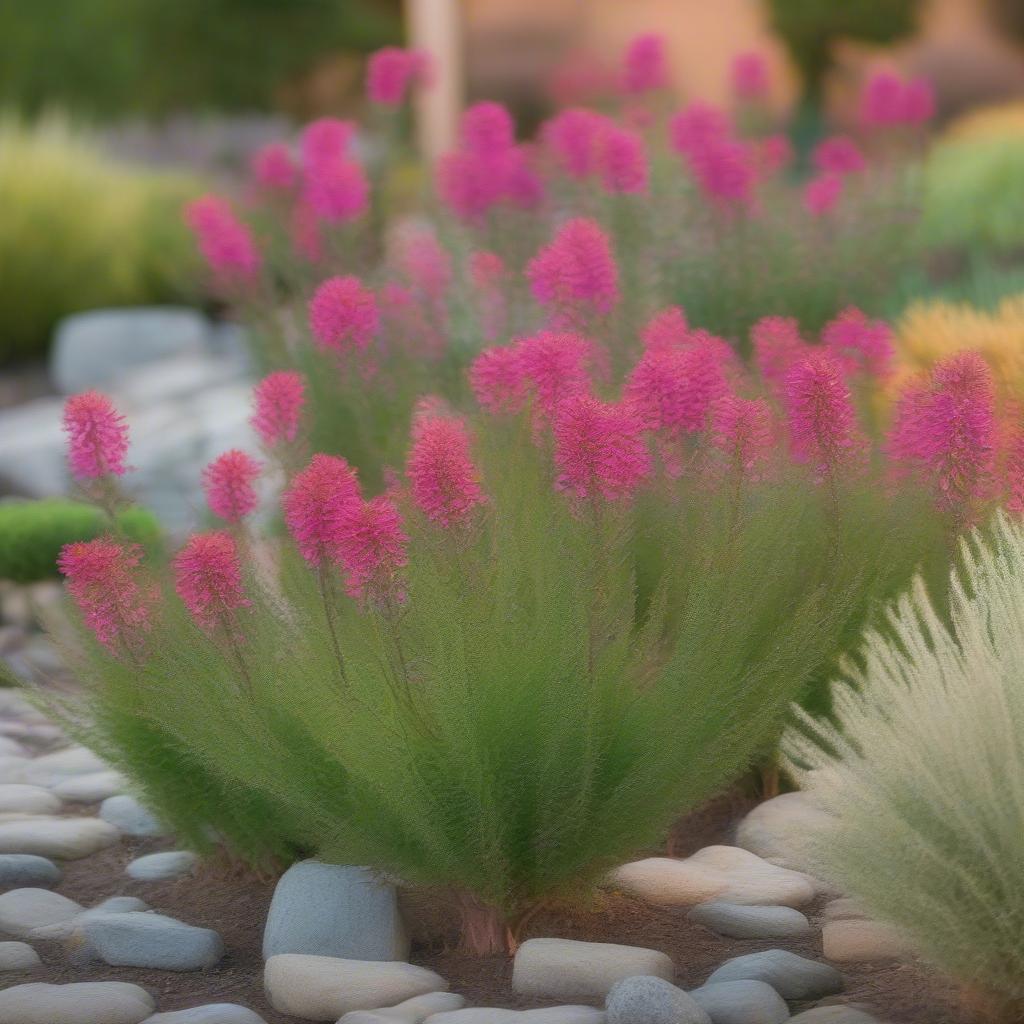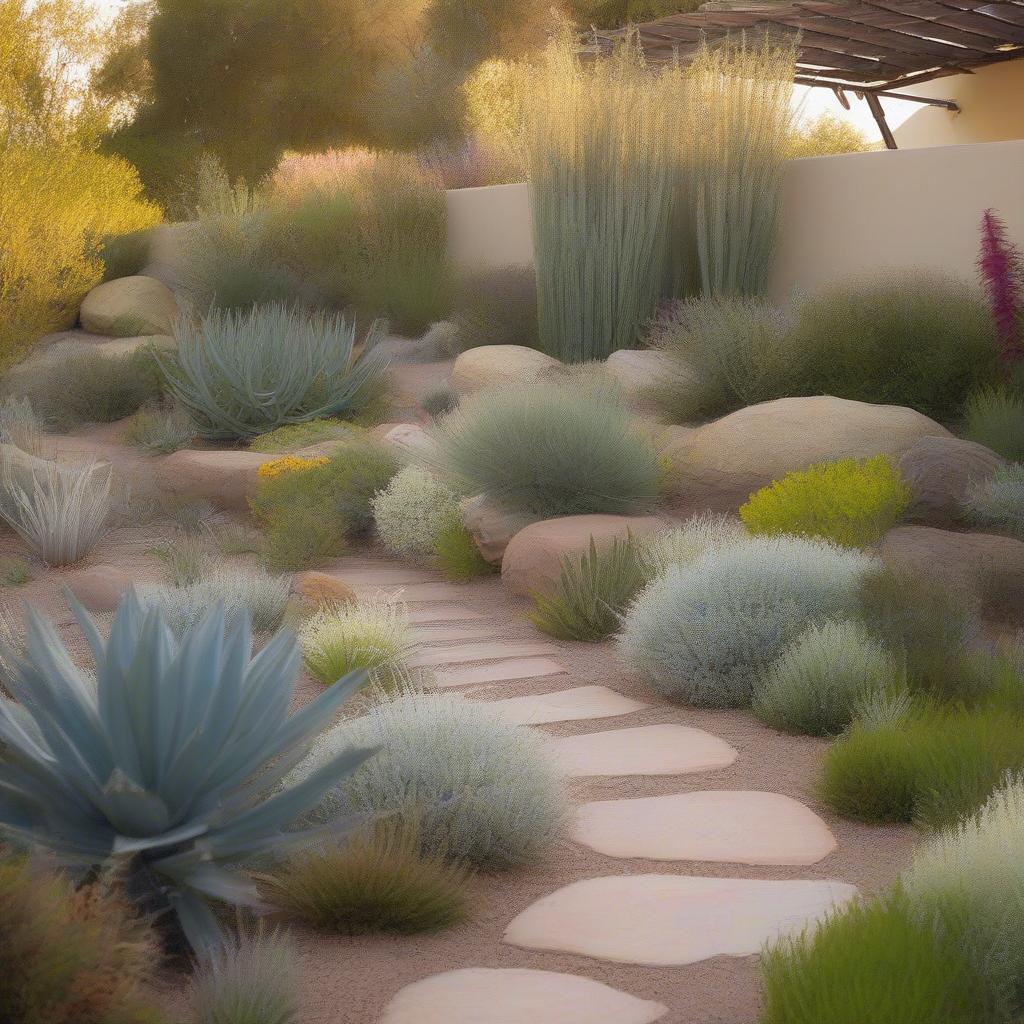
22 Best Drought-Tolerant Plants for Gardens and Landscapes
Gardening in areas with low rainfall or during times of drought can be challenging, but there are many beautiful and low-maintenance plants that can thrive in these conditions. Drought-tolerant plants are ideal for water-conscious gardeners, as they require less watering and care, making them perfect for gardens and landscapes in dry climates.
Why Choose Drought-Tolerant Plants?
Drought-tolerant plants have adapted to survive in dry conditions, and they offer several benefits for gardeners. These plants:
- Require less watering, reducing water consumption and saving time and money.
- Can thrive in poor soil, eliminating the need for fertilizers and other additives.
- Are often low-maintenance, requiring less pruning, deadheading, and pest control.
- Can add beauty and interest to gardens and landscapes, even in areas with limited rainfall.
1. Catmint (Nepeta spp.)
Catmint is a low-maintenance plant that does well when ignored. It thrives in full sun with well-draining soil and produces purple, white, and pink flowers. Catmint prefers cool temperatures and is not tolerant of high heat and humidity.
2. Purple Coneflower (Echinacea purpurea)
Purple coneflower is a beautiful addition to gardens in hot, dry regions. It can thrive in many climates, except for wet and humid conditions. Plant purple coneflower in the spring in a bright, sunny spot and water young flowers once a week.
USDA Growing Zones: 3-8
Color Varieties: Purple, pink
Sun Exposure: Full sun, partial shade
Soil Needs: Well-draining, sandy, rocky, and clay soil
3. Giant Hyssop (Agastache foeniculum)
Giant hyssop is an herbaceous perennial that is heat and drought-tolerant. It grows well with other herbs in the garden and produces pink to creamy white, powder blue to red-violet flowers.
USDA Growing Zones: 3-8
Color Varieties: Pink to creamy white, powder blue to red-violet
Sun Exposure: Full sun
Soil Needs: Neutral, fertile, and well-draining
4. Aloe (Aloe spp.)
Aloe is a popular drought-tolerant plant that comes in many varieties, including aloe vera, jewel aloe, soap aloe, coral aloe, and tiger aloe. Aloe plants typically have gray to bright green leaves and produce yellow blooms.
USDA Growing Zones: 10-12
Color Varieties: Yellow blooms
Sun Exposure: Full sun
Soil Needs: Sandy, dry, well-draining
5. Artemisia (Artemisia spp.)
Artemisia is a genus of plants with hundreds of species that include hardy herbs and shrubs. These plants feature intricate leaf patterns and silvery gray or white foliage that is aromatic.
USDA Growing Zones: 4-8
Color Varieties: Yellow-white blooms
Sun Exposure: Full sun
Soil Needs: Rich, dry to medium moisture, well-draining
6. Artichoke (Cynara cardunculus)
Artichoke plants have an upright growth habit and produce edible artichokes from fall to spring. They prefer full sun and well-draining soil.
USDA Growing Zones: 7-11
Color Varieties: Violet-blue blooms when not harvested
Sun Exposure: Full sun
Soil Needs: Rich, medium moisture, well-draining
7. Beardtongue (Penstemon spp.)
Beardtongue is a low-maintenance plant that produces tubeshaped flowers in white, pink, and purple. It thrives in full sun and well-draining soil.
USDA Growing Zones: 3-8
Color Varieties: White blooms
Sun Exposure: Full sun
Soil Needs: Average, dry to medium moisture, well-draining
8. Fountain Grass (Pennisetum setaceum)
Fountain grass is a fast-growing ornamental grass that produces purple flowers in the summer. It prefers full sun and medium soil moisture.
USDA Growing Zones: 9-10
Color Varieties: Burgundy blooms
Sun Exposure: Full sun to part shade
Soil Needs: Average, medium moisture, well-draining
9. Geranium (Pelargonium spp.)
Geraniums are hardy garden plants that are tolerant of heat and drought. They produce red, pink, purple, orange, or white flowers and prefer well-draining soil.
USDA Growing Zones: 10-11
Color Varieties: Red, pink, purple, orange, or white blooms
Sun Exposure: Full sun to part shade
Soil Needs: Average to rich, medium moisture, well-draining
10. Kangaroo Paw (Anigozanthos spp.)
Kangaroo paw is a drought-tolerant plant that produces yellow-green, red, or pink flowers. It prefers well-draining soil and full sun.
USDA Growing Zones: 10-11
Color Varieties: Yellow-green, red, or pink blooms
Sun Exposure: Full sun to part shade
Soil Needs: Rich, sandy, medium moisture, well-draining
11. Lavender (Lavandula spp.)
Lavender is a low-maintenance plant that produces purple flowers and has a calming fragrance. It prefers well-draining soil and full sun.
USDA Growing Zones: 5-8
Color Varieties: Purple blooms
Sun Exposure: Full sun
Soil Needs: Average, dry to medium moisture, well-draining
12. New Zealand Tea Tree (Leptospermum scoparium)
New Zealand tea tree is an evergreen shrub that produces white, pink, or red flowers. It prefers well-draining soil and full sun.
USDA Growing Zones: 9-10
Color Varieties: White, pink, or red blooms
Sun Exposure: Full sun
Soil Needs: Rich, acidic, medium moisture, loose, well-draining
13. Palo Verde (Parkinsonia spp.)
Palo Verde is a drought-tolerant tree that produces yellow or white flowers. It prefers well-draining soil and full sun.
USDA Growing Zones: 8-10
Color Varieties: Yellow or white blooms
Sun Exposure: Full sun
Soil Needs: Average, dry, well-draining
14. Pride of Madeira (Echium candicans)
Pride of Madeira is a drought-tolerant plant that produces blue-violet or white flowers. It prefers well-draining soil and full sun.
USDA Growing Zones: 9-11
Color Varieties: Blue-violet or white blooms
Sun Exposure: Full sun
Soil Needs: Average, dry to medium moisture, well-draining
15. Pencil Cactus (Euphorbia tirucalli)
Pencil cactus is a drought-tolerant shrub that produces yellow flowers. It prefers well-draining soil and full sun.
USDA Growing Zones: 11-12
Color Varieties: Yellow blooms
Sun Exposure: Full sun
Soil Needs: Average, dry to medium moisture, well-draining
16. Sweet Potato Vine (Ipomea batatas)
Sweet potato vine is a low-maintenance plant that produces pink or violet flowers. It prefers well-draining soil and full sun.
USDA Growing Zones: 9-11
Color Varieties: Pink or violet blooms
Sun Exposure: Full sun
Soil Needs: Average, medium moisture, well-draining
17. Trumpet Vine (Campsis radicans)
Trumpet vine is a drought-tolerant plant that produces orange or red flowers. It prefers well-draining soil and full sun.
USDA Growing Zones: 4-9
Color Varieties: Orange or red blooms
Sun Exposure: Full sun to part shade
Soil Needs: Lean to average, dry to medium moisture, well-draining
18. Wild Lilac (Ceanothus spp.)
Wild lilac is a drought-tolerant shrub that produces blue, purple, or white flowers. It prefers well-draining soil and full sun.
USDA Growing Zones: 7-10
Color Varieties: Blue, purple, or white blooms
Sun Exposure: Full sun
Soil Needs: Average, dry to medium moisture, well-draining
19. Sedum (Sedum spp.)
Sedum is a low-maintenance plant that produces red, pink, yellow, or white flowers. It prefers well-draining soil and full sun.
USDA Growing Zones: 3-10
Color Varieties: Red, pink, yellow, white
Sun Exposure: Full, partial
Soil Needs: Sandy, loamy, well-draining
20. Black-Eyed Susan (Rudbeckia hirta)
Black-eyed Susan is a drought-tolerant plant that produces yellow, orange, or red flowers. It prefers well-draining soil and full sun.
USDA Growing Zones: 3-9
Color Varieties: Yellow, orange, red
Sun Exposure: Full
Soil Needs: Moist, well-draining
21. Aster (Symphyotrichum spp.)
Aster is a drought-tolerant plant that produces purple, pink, blue, or white flowers. It prefers well-draining soil and full sun.
USDA Growing Zones: 3-8
Color Varieties: Purple, pink, blue, white
Sun Exposure: Full
Soil Needs: Loamy, well-drained
22. Russian Sage (Salvia yangii)
Russian sage is a drought-tolerant plant that produces blue or purple flowers. It prefers well-draining soil and full sun.
USDA Growing Zones: 3a-9b
Color Varieties: Blue, purple
Sun Exposure: Full
Soil Needs: Well-draining
Conclusion
These 22 drought-tolerant plants are perfect for gardeners who want to reduce their water consumption and create a low-maintenance garden. From succulents to flowering shrubs, there’s a drought-tolerant plant to suit every landscape and style.
Remember to choose plants that are suitable for your climate and soil type, and to water them sparingly to ensure their survival. With these drought-tolerant plants, you can create a beautiful and sustainable garden that will thrive even in dry conditions.
 What are drought-tolerant plants?
What are drought-tolerant plants?
Plants that have adapted to survive in dry conditions, requiring less watering and maintenance.
Why should I choose drought-tolerant plants?
They reduce water consumption, require less pruning and pest control, and can add beauty to gardens and landscapes.
What is Catmint (Nepeta spp.), and where can it grow?
Catmint is a hardy, low-maintenance plant with purple, white, or pink flowers. It thrives in full sun with well-draining soil in USDA Growing Zones 3-8.
What are the care requirements for Purple Coneflower (Echinacea purpurea)?
Plant in full sun in USDA Growing Zones 3-8, preferring well-draining soil and average to medium moisture.
What kind of soil does Giant Hyssop (Agastache foeniculum) need?
Giant Hyssop prefers neutral, fertile, and well-draining soil in USDA Growing Zones 3-8.
Which aloe species are suitable for extreme dry climates?
Aloe spp. like aloe vera, jewel aloe, soap aloe, and tiger aloe thrive in sandy, dry, well-draining soil in USDA Growing Zones 10-12.
What is the main characteristic of Artemisia (Artemisia spp.)?
Artemisia has intricate silver-gray or white leaf patterns and is tolerant of poor soil conditions in USDA Growing Zones 4-8.
What is the most suitable climate for Artichoke (Cynara cardunculus)?
Artichokes do best in USDA Growing Zones 7-11, in full sun with rich, moist, well-draining soil.
What is a notable feature of Beardtongue (Penstemon spp.)?
Beardtongue produces tube-shaped flowers in various colors and likes full sun in USDA Growing Zones 3-8.
What makes Fountain Grass (Pennisetum setaceum) a good choice for dry areas?
Fountain Grass is a fast-growing ornamental grass producing purplish flowers; it prefers full sun and medium soil moisture in USDA Growing Zones 9-10.
How do Geraniums (Pelargonium spp.) adapt to dry climates?
Geraniums are drought-tolerant plants that produce colorful blooms and thrive in full sun to part shade with well-draining soil in USDA Growing Zones 10-11.
What type of soil is best for Kangaroo Paw (Anigozanthos spp.)?
Kangaroo Paw prefers rich, sandy, medium moisture, well-draining soil in USDA Growing Zones 10-11.
What makes Lavender (Lavandula spp.) suitable for dry landscapes?
Lavender is low-maintenance, producing fragrant purple flowers in full sun in USDA Growing Zones 5-8, thriving in average, dry to medium moisture, well-draining soil.
What are the growing conditions for New Zealand Tea Tree (Leptospermum scoparium)?
This evergreen shrub produces white, pink, or red blooms and favors rich, acidic, medium moisture, loose, well-draining soil in USDA Growing Zones 9-10 with full sun.
What type of flowers does Palo Verde (Parkinsonia spp.) produce?
Palo Verde produces yellow or white flowers in full sun with well-draining soil in USDA Growing Zones 8-10.
What is Pride of Madeira (Echium candicans)?
Pride of Madeira is a drought-tolerant plant with blue-violet or white flowers, thriving in full sun and well-draining soil in USDA Growing Zones 9-11.
What does Pencil Cactus (Euphorbia tirucalli) look like?
Pencil cactus, a drought-tolerant shrub, produces yellow flowers in full sun with well-draining soil in USDA Growing Zones 11-12.
What are the characteristics of Sweet Potato Vine (Ipomea batatas)?
Sweet potato vine, a low-maintenance plant, produces pink or violet flowers, thriving in full sun with well-draining soil in USDA Growing Zones 9-11.
How does Trumpet Vine (Campsis radicans) adapt to dry conditions?
Trumpet vine is drought-tolerant, producing orange or red flowers, thriving in well-draining soil in USDA Growing Zones 4-9.
What color flowers does Wild Lilac (Ceanothus spp.) produce?
Wild lilac produces blue, purple, or white flowers, thriving in well-draining soil in USDA Growing Zones 7-10.
Which type of flowers do Sedum (Sedum spp.) plants produce?
Sedum, a low-maintenance plant, produces a variety of flower colors like red, pink, yellow, and white in USDA Growing Zones 3-10.
Where can Black-Eyed Susan (Rudbeckia hirta) grow?
Black-Eyed Susan is a drought-tolerant plant with yellow, orange, or red flowers, thriving in well-draining soil in USDA Growing Zones 3-9.
What kind of flowers does Aster (Symphyotrichum spp.) bloom with?
Aster produces purple, pink, blue, or white flowers, thriving in well-drained loamy soil in USDA Growing Zones 3-8.
How much sun does Russian Sage (Salvia yangii) need?
Russian sage needs full sun and well-draining soil, producing blue or purple flowers in USDA Growing Zones 3a-9b.














